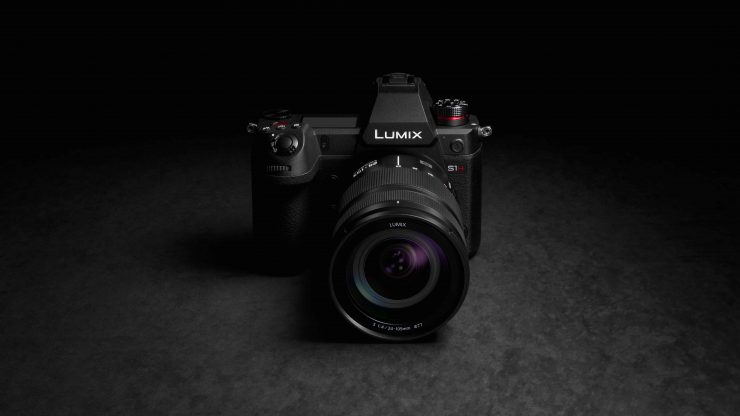
Panasonic has just unveiled the Lumix S1H, which has the world’s first 6K 24p recording capability in a full-frame mirrorless camera.
It’s best to think of the S1H as an S1 on steroids. Make no mistake though, unlike the S1 and S1R, the LUMIX S1H was designed and developed especially for film production.
The S1H is far from ready for consumers. Panasonic is only showing a prototype of the camera here at Cinegear. Just like they did with the S1 and S1R, this is more of a tease than anything else. The camera isn’t expected to be available until Autumn 2019.

We will bring you more details as we get them, including an interview with Panasonic, but here is what we know so far:
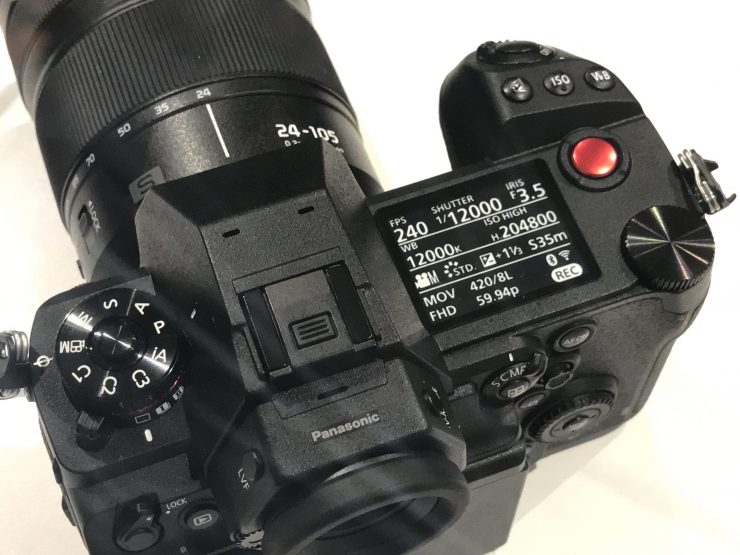
UPDATE: We spoke to Yosuke Yamane, Panasonic’s Director of the Imaging Business Division, and the main driving force behind the S1H, and many of Panasonic’s other cameras.
Yosuke told us that Panasonic started the development of full-frame mirrorless cameras 8 years ago. Yosuke envisaged a video-centric full frame mirrorless camera back at that same time. The actual development of the S1H has been going for the last 1.5 years.
He also told us that the S1H shares a lot of technology from the GH5 and GH5s.
I tried to find out whether the sensor was the same as the one used in the S1 or a brand new sensor, but Panasonic said they would not comment on that at this time.
I also attempted to find out whether the 4K 60p 10-bit 4:2:2 internal recording was using an APS-C crop, and I was told that is yet to be determined.
Panasonic also said that they worked very hard on the cooling system and this has enabled the S1H to have unlimited recording times.
Yosuke told us that the camera is recording in a codec that is currently already available. So, it’s probably fairly safe to assume that codec is H.265. Interestingly, Panasonic told us that they are still studying what media the camera will use.
In an interesting footnote, Yosuke told us that the technology used to make the S1H possible would likely go into the next versions of the Varicam and the EVA1.
Key features
- 6K/24p (3:2 aspect ratio)
- 5.9K/30p (16:9 aspect ratio) video recording
- 4K DCI & UHD 4:2:2 10-bit 60p
- Claimed dynamic range of over 14 stops
- V-Log/V-Gamut
- 4:3 Anamorphic mode
- No recording time limits
- Release time Autumn 2019
6K recording
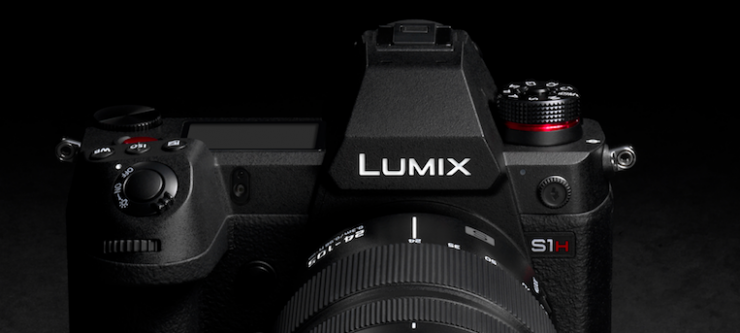
On paper, the specifications are certainly impressive. The S1H is the World’s first full-frame mirrorless camera capable of recording at 6K 24p (3:2 aspect ratio), 5.9K up to 30p (16:9 aspect ratio), and UHD/4K DCI in 4:2:2 10-bit at up to 60p internally.
As a comparison, it’s baby brother, the S1, requires an optional paid update to get 4K 30p 10-bit 4:2:2 internal recording, and 4K 60p external recording with V-Log. On the S1H all of this can be done internally and without need for a license.
The 6K (6000 x 4000) 24p 3:2 mode is interesting, but most people shooting video are probably going to record in the 5.9K up to 30p in a 16:9 aspect ratio mode.
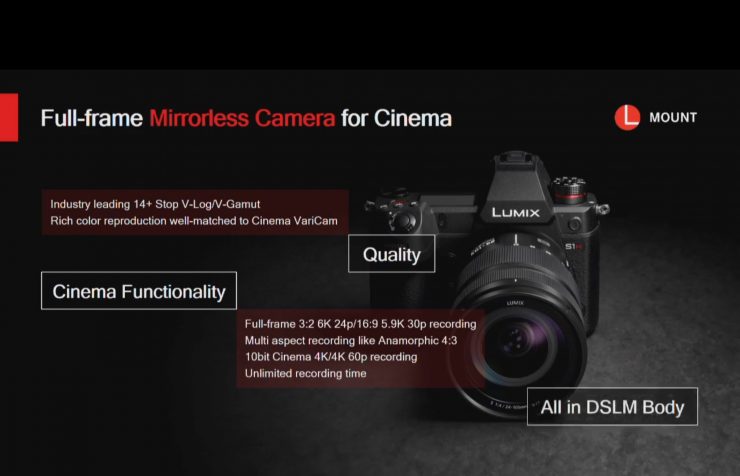
We currently have no idea what the 6K 24p (3:2) and 5.9K 30p (16:9 aspect ratio) modes are recording in. I very much doubt it is 4:2:2 10-bit. It looks like the camera does an APS-C sized crop when recording 4K 60p.
The S1H is certainly, at least in my opinion, the first full frame mirrorless that doesn’t require an external recorder to obtain the best image quality. Yes, you could argue that recording externally in ProRes 422HQ may be better, but I think you beauty of the S1H is that you don’t need to.
There is no indication from Panasonic about whether the S1H is capable of Full HD 180 fps recording, but given that it is possible on the S1, there is no reason to believe it won’t be included on the S1H.
With the S1, there are shooting modes that are available for recording continuous 4K (3504 x 2336) 4:3 8MP stills at a 60fps, or 6K (5184 x 3456) 3:2 at 30 fps With the S1H it looks like Panasonic has been able to take the information off the sensor to enable the camera to record continuously in 6K 24p in 3:2 as a video file instead of a series of still images. This mode could be very useful for photographers who will be able to grab 6K still images from the continually recording video.
4:3 Anamorphic shooting
Unlike the GH5 and GH5s, the S1H has a 3:2, not a 4:3 sized sensor. The GH5 has a 6K Anamorphic 4:3 mode (4992 x 3744). Just what the 4:3 anamorphic modes on the S1H are we don’t know for sure.
At the S1H launch, Panasonic showed a sizzle reel shot by Los Angeles based DP Alicia Robbins.
The film was shot in the cameras 4:3 anamorphic mode in 4:2:2 10-bit 24p. using Atlas anamorphic lenses.
History of innovation
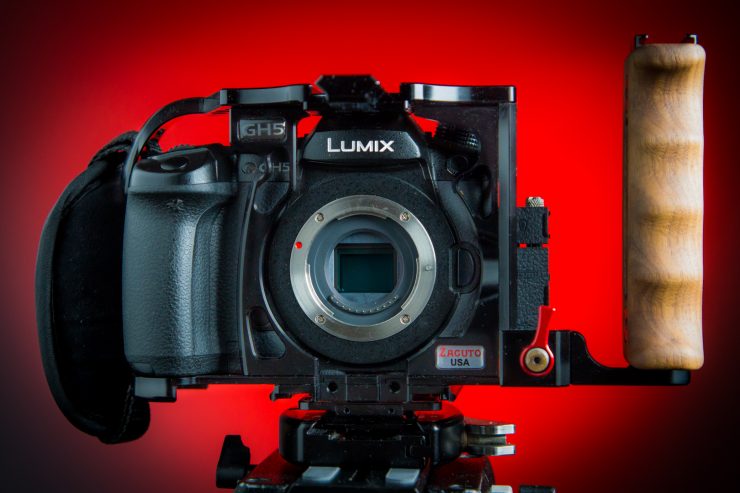
Some of these world first features are no real surprise if you look back at the history of Panasonic:
- 2009 – The LUMIX GH1 was the World’s first digital single lens mirrorless camera capable of Full-HD AVCHD video recording.
- 2014 – The LUMIX GH4 was the World’s first digital single lens mirrorless camera capable of 4K video recording.
- 2017 – The LUMIX GH5 was the World’s first mirrorless camera capable of 4K/60p, 4:2:2 10-bit 4K/30p recording.
V-Log/V-Gamut
Unlike with the S1 and S1R, the S1H has V-Log/V-Gamut included as standard. With the video-centric S1, if you want to record internal 60p 4:2:2 10 bit and V-Log you need an update key similar to the GH5.
According to Panasonic, the S1H’s recorded footage is compatible with V-Log footage recorded by VariCam or V-Log L footage recorded by other LUMIX cameras such as the GH5/GH5S and S1.
It’s nice to see that Panasonic has included V-Log/V-Gamut in S1H and not made it a paid option. This is the first Panasonic mirrorless camera (if you don’t count the just announced S1 deal) where you haven’t had to pay for a license to use V-Log.
Sensor?
We have no idea what sensor is being used in the S1H. Maybe it’s the same full-frame 24.2MP MOS sensor and Venus Engine as the S1, but we haven’t been officially told. If it is not the same sensor then it is likely to be a similar size.
For reference, the S1 sensor is 35.6 x 23.8 mm and it has a sensor resolution of 6026 x 4017. The maximum image resolution that can be recorded is 6000 x 4000. That would mean that 6K 3:2 would be possible from this sensor.
To record in 5.9K 16:9 the number of effective pixels needed is approx. 18.69 megapixels (5952 x 3140).
Similiar form factor as the S1 & S1R
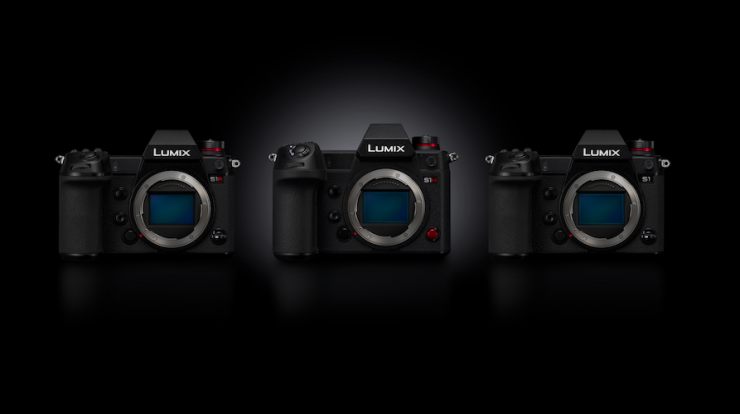
The S1H is a sister camera to the S1 and the S1R. It shares a similar form factor and look. It is, however, slightly taller and wider.
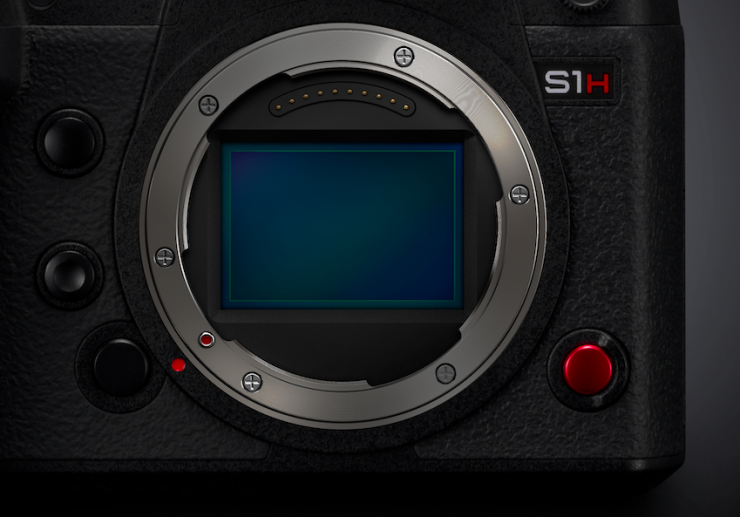
Notice the large red button. We assume that this is a record button.
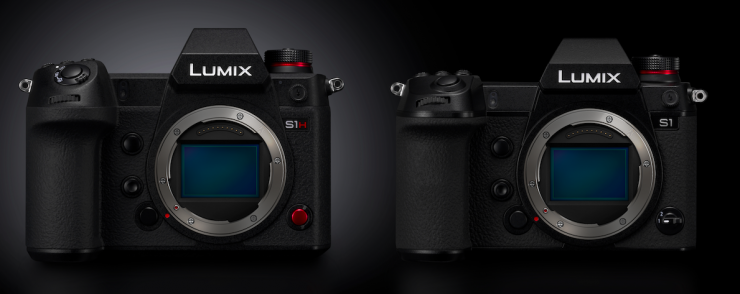
You can see that the red button on the S1H is placed where the Mode Dial button is on the S1.
Just like the S1 and S1R, the S1H is quite large for mirrorless cameras. The camera is much larger than the Sony Alpha cameras and larger than the Nikon Z and Canon R. It is also a lot heavier.
This does provide some advantages though. Panasonic is able to squeeze in two card slots (XQD + SD Card), larger batteries, plenty of cooling and ergonomically, just like the S1 and S1R, it should be quite nice to hold.
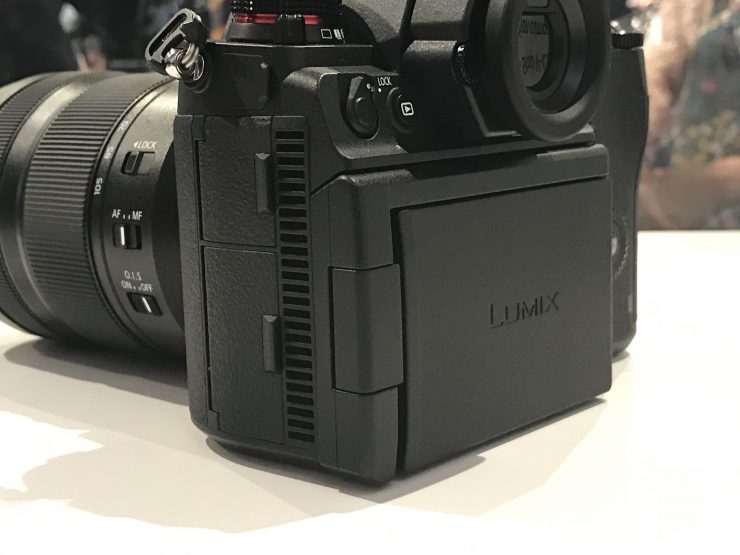
The camera has a 3.2″ fold out monitor that looks similar to the one that on the GH5, as well as a display screen on the top of the camera which photographers will like. The camera features an OLED EVF with a 5.760k-dot resolution that is found on the S1 and S1R. The OLED EVF also features an impressive 120Hz refresh rate.
The S1H is probably using the same Contrast-Detect 225-Area DFD AF System and Sensor-Shift Image Stabilization as the S1.
Power & Other Accessories
The S1H uses the same batteries as the S1 and S1R, the DMW-BLJ31. It has a 3100mah capacity. For extended shooting, you should be able to add the DMW-BGS1 battery grip which can hold another battery and connects via electronic contacts rather than a dummy battery like other battery grips. The grip retails for $349.99 USD.
The camera has a USB Type-C port that allows for fast file transfers as well as high-speed in-camera battery charging. Additionally, there is an HDMI Type A port, a 2.5mm port can be used with the optional DMW-RS2 Remote Shutter, and 3.5mm microphone and headphone jacks.
What about the heat?
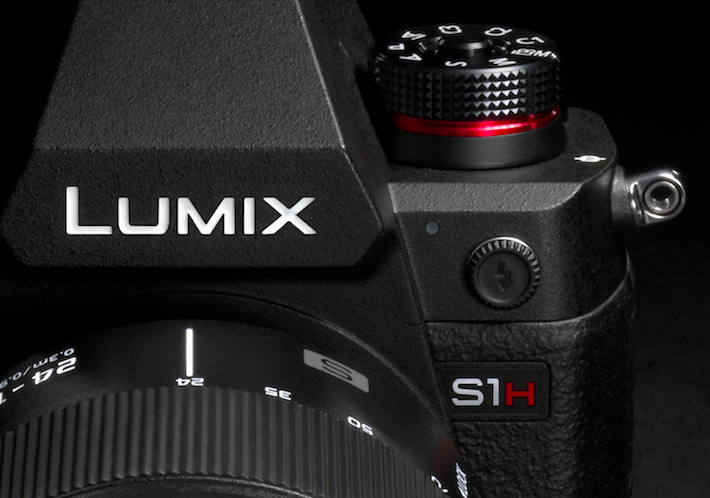
Full frame mirrorless cameras recording 4K video generate a lot of heat. Unlike digital cinema cameras that have large cooling systems and vents to dissipate the heat, mirrorless cameras are weather sealed. This means that there is nowhere for the heat to escape. A lot of full-frame mirrorless cameras suffer from overheating problems when they are recording video.
The reason that the body of the S1H is larger than the S1 and S1R is probably directly due to these heat issues. Having a larger body would certainly help with heat dissipation, especially if you are recording in 6K.
Even though the S1H can record continuously without any time limits, its still going to get hot. Panasonic says that when the camera’s temperature rises above the specified operation temperature, the camera may automatically stop video recording to protect it from heat damage.
Does the S1H throw a spanner in the works for Panasonic?
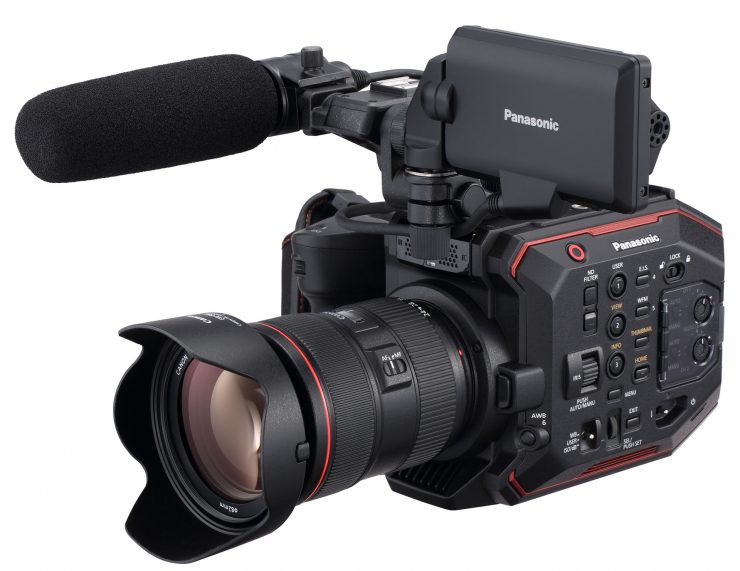
With the S1H being specifically marketed as a film production tool how does this affect other dedicated Panasonic Cinema cameras, especially the EVA1?
It’s very rare to see mainstream manufacturers put features in lower priced cameras that are as good, if not better than their more expensive offerings.
Even though the S1H offers 4K DCI & UHD 4:2:2 10-bit 60p, 6K, and 5.9K recording, a claimed 14 stops of dynamic range, and V-Log/V-Gamut, it is still missing a lot of features that you get on an EVA1.
The EVA1 has proper onboard audio recording with XLRs, built-in ND filters, external RAW recording, Dual Native ISO, 2K up to 240 fps, and SDI out.
Despite all these extras features, it could be argued that the S1H really starts to blur the lines between a hybrid/mirrorless camera and a cinema camera such as the EVA1.
Panasonic told us at Cinegear that their strategy is to unify the Varicam, EVA1, and Lumix divisions and try and bring them all closer together.
Your move Sony
The LUMIX S1H comes just 3 months after Panasonic officially announced the full specifications and details of their first full frame mirrorless cameras, the S1 and S1R. This announcement today tells me that Panasonic is aggressively going after Sony to provide the best available (at least as far as specifications are concerned) full-frame mirrorless cameras for video shooters.
Sony really does seem to have dropped the ball. They had a golden opportunity to keep their crown as the king of mirrorless cameras, but they have so far failed to produce the long-anticipated a7S III.
As everyone is well aware, Sony had a massive jump on the competition when it came to full frame and APS-C mirrorless cameras. Over the last few years, this jump became a small step, and now you could well argue that they have been leapfrogged by some of the competition. Panasonic, Fujifilm, Nikon, and even Canon (well, sort of) have all caught up.
We have seen it time and time again in our industry where someone who is out in front with not a lot of competition gets complacent and fails to innovate. Canon did this after the initial success of the 5D Mark II and the C300, and now it seems that Sony has done the same thing with their mirrorless range.
That’s not to say the a7S III may not be a great camera, but Sony has left the door open, and now everyone else has crashed the party. In saying all of that, Sony is still firmly entrenched as the market leader in mirrorless cameras. So whether they are genuinely worried about all of this new competition is hard to know.
How does the S1H compare to the S1 for video?
| LUMIX S1H | LUMIX S1 |
| Sensor: Unknown | Sensor: 24.2MP MOS sensor |
| Video Recording: 6K 24p (3:2 aspect ratio), 5.9K 30p (16:9 aspect ratio) ,4K DCI & UHD 10-bit 60p | Video Recording: 4K 60p, 8-bit 4:2:0 internal with APS-C crop, 4K 30p with full frame image, Optional paid update to 4K30P, 10-bit 4:2:2 internal and 4K60P, externally with V-Log. |
| V-Log/VGamut: Yes | V-Log/VGamut: Yes (with optional license key) |
| Recording Bitrates: Unkown | Recording Bitrates: MP4/H.265 UHD 4K (3840 x 2160) at 23.976p/29.97p [72 Mb/s] MP4/H.264 UHD 4K (3840 x 2160) at 59.94p [150 Mb/s] UHD 4K (3840 x 2160) at 23.976p/29.97p [100 Mb/s] |
| Recording limit: No | Recording limit: Yes/No- UHD 4K 60p recording is limited to 29 minutes 59 seconds |
| Headphone & Microphone ports: Yes | Headphone & Microphone ports: Yes |
| HDMI: Yes | HDMI: Yes |
Specs don’t maketh the camera
Having great specifications on paper is one thing, but specifications don’t take pictures and they don’t use the camera. There is a lot of factors that go into what makes a good camera, and specifications are just one of them.
As for the competition
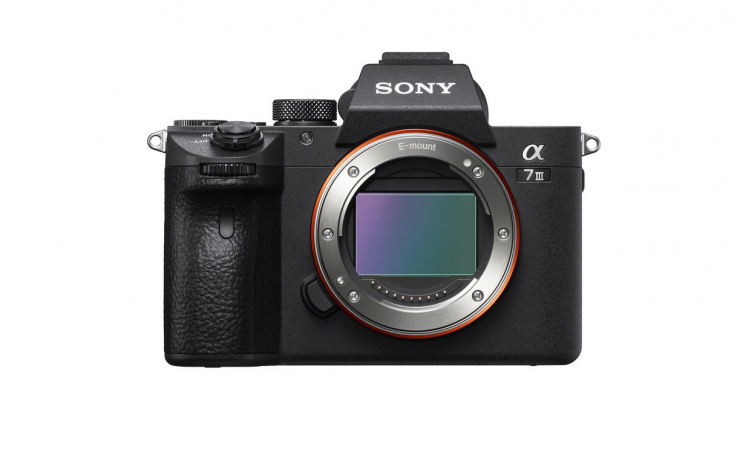
Sony Alpha a7 III Mirrorless Digital Camera 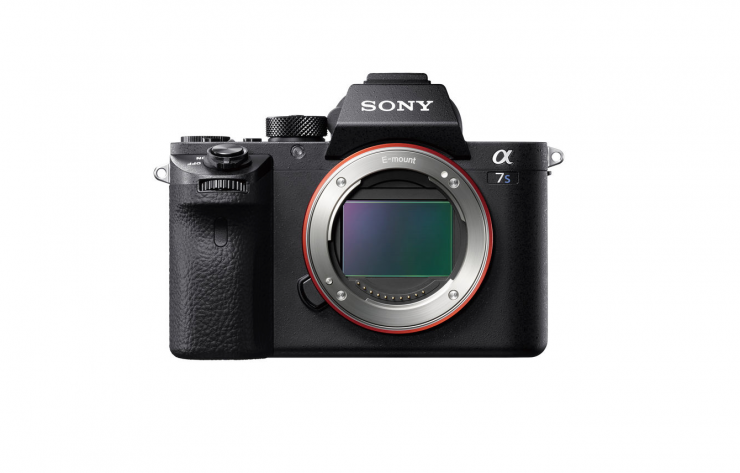
Sony Alpha a7S II Mirrorless Digital Camera 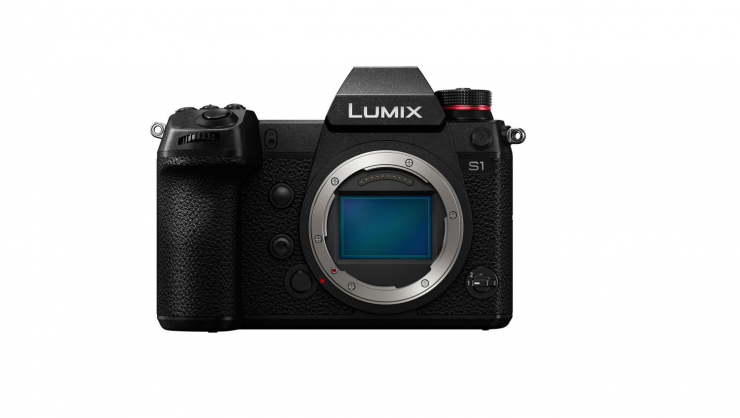
Panasonic Lumix DC-S1 Mirrorless Digital Camera 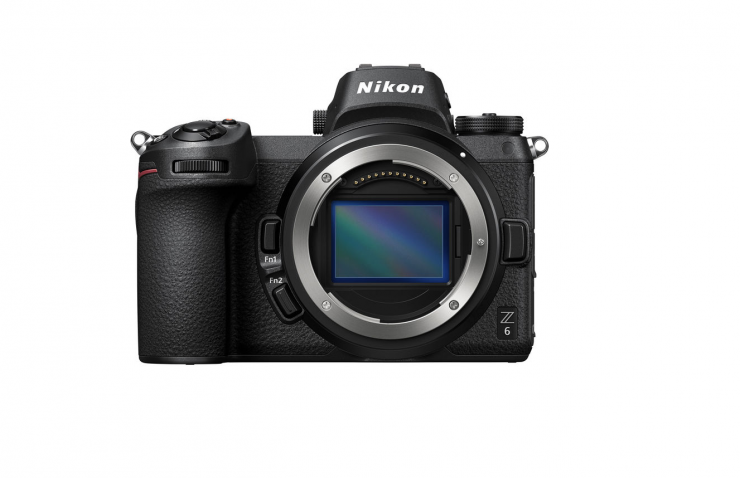
Nikon Z 6 Mirrorless Digital Camer 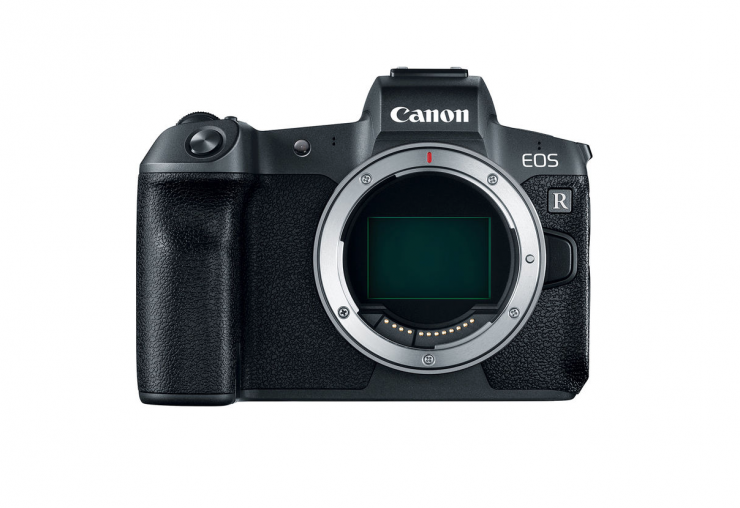
Canon EOS R Mirrorless Digital Camera
As far as the competition goes if you are looking for a full frame mirrorless camera to primarily use for video, the best available options are the Panasonic S1, Nikon Z6, Sony a7s II, Sony a7 III, and Canon EOS R.
On paper at least, most of these cameras look outclassed by the S1H. In saying that, all of these other cameras are significantly cheaper than what the S1H is going to cost.
Panasonic’s own S1 is $2,499 USD, the Sony a7s II ($1,998 USD), Sony a7 III ($1,998 USD), Nikon Z6 ($1,796.95 USD), and Canon EOS R ($1,999.00 USD) are all closely priced.
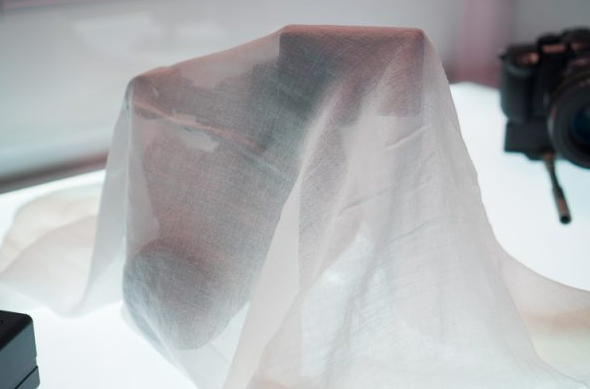
Whether you like Panasonic’s tease strategy or not, that is the way they now seem to market their products. Announce a camera and then try and build up hype by not giving everything away. They did the same thing with the EVA1 and the S1 and S1R. If you are going to try and build people’s expectations up, it needs to live up to the hype.
The problem with an early tease is that you leave the door open for Sony to sweep in with the a7S III. There is every chance that Sony could get the a7S III to market before the S1H becomes available.
While there is certainly nothing wrong with the S1 and S1R, they haven’t exactly stolen the thunder from any other full-frame mirrorless cameras that are already available, but the S1H, this looks to be another story altogether.
Just like when the S1 and S1R were first teased, we will have to wait to find out what the full specifications and capabilities of the S1H will be. I’m personally not a big fan of product teasing. I would much rather a company announce a product where they provide all of the features and specifications and then make it available to purchase within a few weeks.
Price
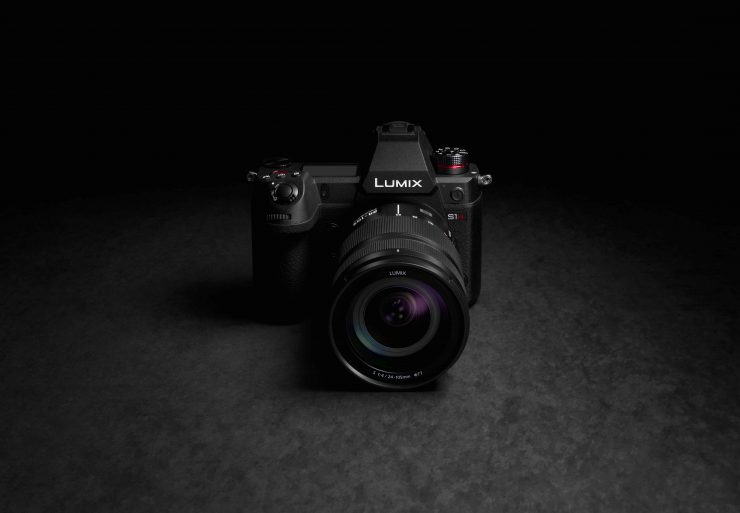
Panasonic told me that the approx. price of the S1H will be $4,000 USD. This certainly makes it considerably more expensive than the S1 and all of the other full-frame mirrorless cameras you would choose for video.
The S1H is scheduled to be available in the northern hemisphere Autumn.
What do you think about this latest announcement from Panasonic? Would you buy the S1H or are you still holding out for the Sony a7SIII? Would you pay $4,000 USD for the S1H? Let us know in the comments section below.





